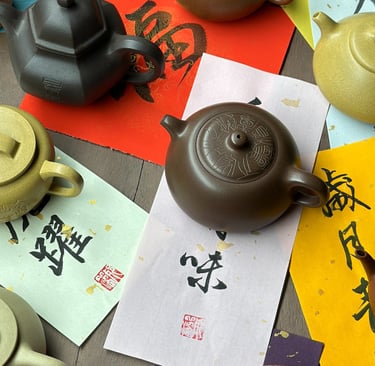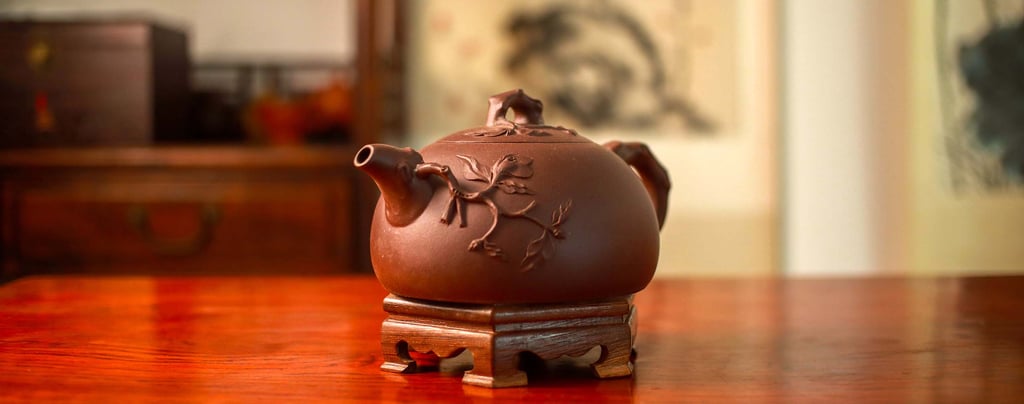The Role of Chinese Tea Culture in Cross-Cultural Communication
Explore how Chinese tea culture serves as a bridge in cross-cultural communication, showcasing China's heritage, fostering exchange, and enhancing global influence through diplomatic and cultural engagement.
CHINESE TEA CULTUREGLOBAL TEA CULTURE
Ever wondered how something as simple as tea can build bridges between cultures? Or how a single tradition, passed down for centuries, can help people from different parts of the world understand each other better? Chinese tea culture is exactly that—a powerful tool in cross-cultural communication.
Whether you're a tea lover or just curious, here's the deal: Chinese tea culture isn't just about sipping a cup. It's a symbol of balance, respect, and centuries of tradition. But what does it mean for global interactions today? How does tea open doors for conversations and connections between China and the rest of the world?
Let’s break it down.
Chinese Tea Culture’s Role in Cross-Cultural Understanding and Exchange
Tea Culture as a Reflection of China’s Cultural Depth
Tea in China isn’t just a drink. It's a story—a window into the country’s rich history and deep-rooted traditions. Take The Classic of Tea (Chajing) by Lu Yu, for example. It’s more than just a guide to tea; it’s an entire cultural bible, detailing tea’s origins, its types, how it’s made, and how it should be consumed. That’s real depth. And when the world looks at this, they don't just see tea; they see China’s sophistication, values, and long-standing traditions.
Another example is Lao She's Teahouse, a play that paints the picture of Chinese society through the lens of a teahouse, especially during turbulent times. It shows the struggles of ordinary people while highlighting the central role tea played in everyday life.
These works, and many others, help global audiences understand China’s rich history and complex social fabric. They create a bridge where people can start to see beyond stereotypes and appreciate the nuances of Chinese culture.
Tea Culture as a Catalyst for Cultural Exchange
Chinese tea culture has been a key player in fostering cultural exchange around the world. Think about events like the China-U.S. Cultural Festival. Tea takes centre stage, not just as a beverage but as a symbol of Chinese harmony and balance. It’s in festivals, exhibitions, and even casual discussions about tea, where foreign audiences get a real sense of China’s philosophy, customs, and values.
When people from different cultures sit down to share a cup of tea, they’re not just tasting a drink; they’re sharing a piece of history. This kind of cultural exchange helps break down barriers and fosters a deeper understanding between nations.
Tea Culture’s Role in Strengthening China’s Global Influence
Globalization has turned the world into a small village, and Chinese tea culture is playing a big role in this. The rise of tea houses in places like the U.S. and Europe is a clear sign of the growing global fascination with Chinese tea. And it’s not just about the tea—it’s about the conversation it sparks.
In today’s world, tea is no longer just a Chinese thing. It’s become part of a global lifestyle. From tea festivals to tea tastings, more people are exploring the deeper meanings of tea culture. By sharing this tradition, China isn't just exporting tea; it’s also sharing its values of balance, respect, and harmony with the world.
Tea Culture as a Diplomatic Ambassador in Cross-Cultural Communication
Here’s where it gets really interesting: tea isn't just about cultural exchange—it’s also a tool for diplomacy. When nations want to talk, they often do so over tea. This idea of “tea diplomacy” is real, and it works. Tea serves as a cultural ambassador, creating an environment of dialogue, respect, and cooperation.
Take the example of Yi Xing clay teapots. These aren’t just functional items; they represent a piece of Chinese craftsmanship and artistry. When used in diplomatic settings, they’re a powerful symbol of China’s commitment to fostering peaceful relationships. It’s like a silent ambassador, speaking volumes about the values China stands for—balance, respect, and mutual understanding.
Conclusion
So, what’s the big takeaway here? Chinese tea culture is way more than just a drink—it’s a communication tool, a cultural bridge, and an ambassador for diplomacy. Whether it’s through ancient texts like The Classic of Tea, performances like Teahouse, or modern-day festivals, tea has been and will continue to be a key player in cross-cultural exchange.
Tea represents China’s depth, history, and values, helping the world better understand the country, fostering relationships, and encouraging dialogue across borders. As the world becomes more connected, tea culture will remain a cornerstone in these global conversations.
Curious to dive deeper into tea culture? Check out our blog for more insights and practical tips on how tea is shaping the world today.




